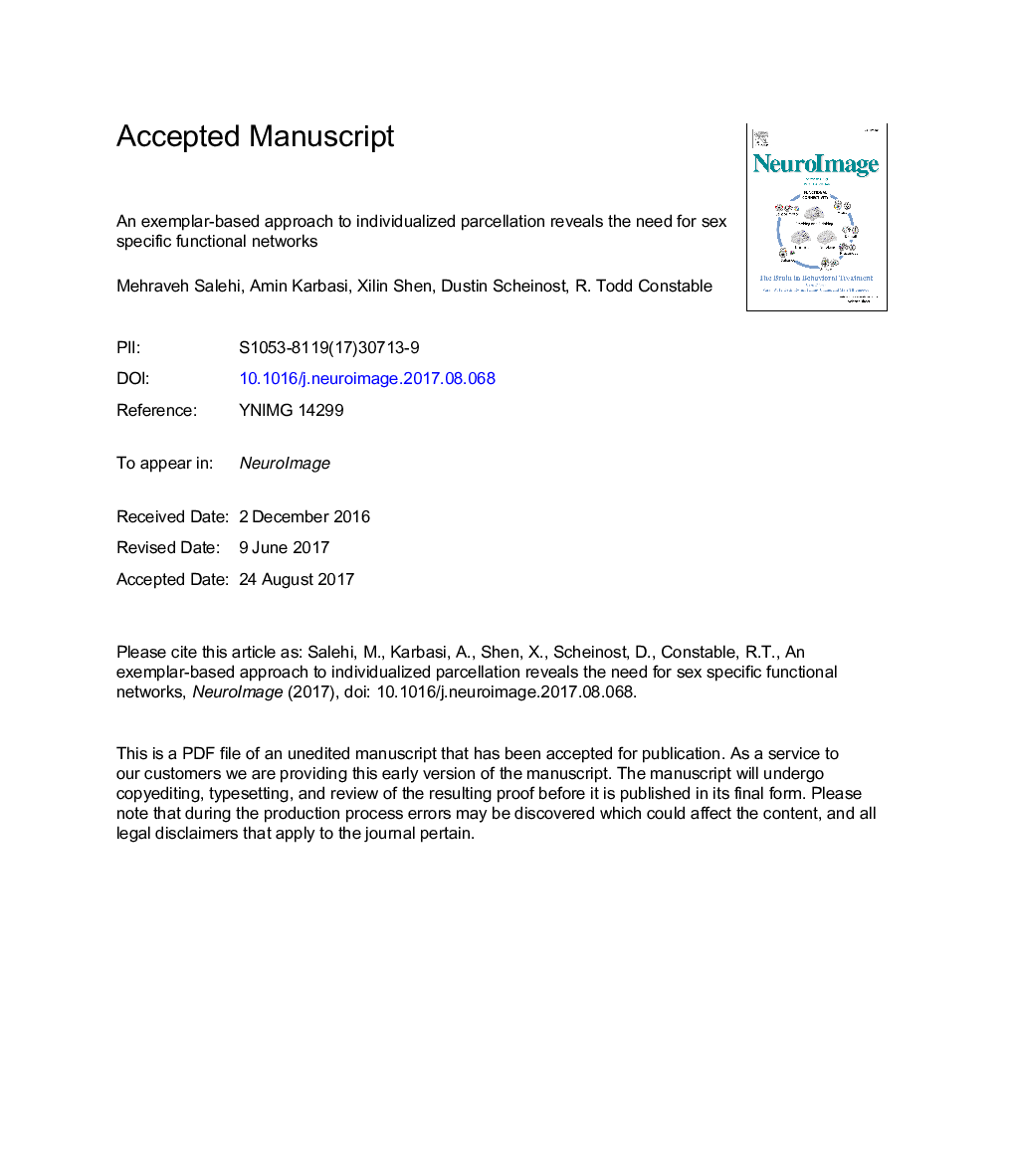| کد مقاله | کد نشریه | سال انتشار | مقاله انگلیسی | نسخه تمام متن |
|---|---|---|---|---|
| 8687123 | 1580840 | 2018 | 39 صفحه PDF | دانلود رایگان |
عنوان انگلیسی مقاله ISI
An exemplar-based approach to individualized parcellation reveals the need for sex specific functional networks
ترجمه فارسی عنوان
یک رویکرد مبتنی بر نمونه بر روی تقسیم بندی فردی، نیاز به شبکه های کاربردی ویژه ای از جنس را نشان می دهد
دانلود مقاله + سفارش ترجمه
دانلود مقاله ISI انگلیسی
رایگان برای ایرانیان
کلمات کلیدی
تفاوتهای فردی، خوشه بندی مبتنی بر نمونه زیرمجموعه، تقسیم کارکردی، تفاوت های جنسی، مدل سازی پیش بینی کننده پروژه انسانی انسانی،
ترجمه چکیده
کار اخیر با داده های اتصال عملکردی منجر به پیشرفت قابل توجهی در درک عملکرد سازمان مغز شده است. در حالی که اکثریت ادبیات بر رویکردهای تقسیم بندی در سطح گروه تمرکز کرده اند، شواهد فراوانی وجود دارد که مغز در هر دو ساختار و عملکرد در افراد متفاوت است. در این کار، ما یک روش تقسیم بندی را معرفی می کنیم که شامل تعریف شبکه های کاربردی در سطح فردی و گروهی است. روش پیشنهادی مفهوم زیرمودولاریتی را در بر می گیرد برای هماهنگ سازی قشر مغزی در حالی که ایجاد یک مکاتبات فراگیر بین شبکه های کاربردی فردی. با استفاده از این تکنیک تقسیم بندی، ما با موفقیت یک مدل پیش بینی متقابل معتبر ایجاد کردیم که جنس افراد را پیش بینی می کند، صرفا بر اساس طرح های تقسیم بندی (به عنوان مثال بردارهای تخصیص گره به شبکه). یافته های پیش بینی جنسی نشان می دهد که تقسیم فردی شبکه های کاربردی می تواند زیر گروه ها را در یک جمعیت نشان دهد و نشان می دهد که استفاده از تقسیم شبکه جهانی ممکن است تفاوت های اساسی در سازمان شبکه را نادیده بگیرد. این یک نکته بسیار مهم است که در مطالعات در مقایسه با بیماران در مقایسه با کنترل یا حتی زیرگروه های بیمار مورد توجه قرار گیرد. سازمان شبکه ممکن است بین افراد متفاوت باشد و تنظیمات جهانی نباید فرض شود. این رویکرد به مطالعه فردی سازمان سازمانی در مغز، پیامدهای زیادی برای علوم اعصاب و کاربرد بالینی دارد.
موضوعات مرتبط
علوم زیستی و بیوفناوری
علم عصب شناسی
علوم اعصاب شناختی
چکیده انگلیسی
Recent work with functional connectivity data has led to significant progress in understanding the functional organization of the brain. While the majority of the literature has focused on group-level parcellation approaches, there is ample evidence that the brain varies in both structure and function across individuals. In this work, we introduce a parcellation technique that incorporates delineation of functional networks both at the individual- and group-level. The proposed technique deploys the notion of “submodularity” to jointly parcellate the cerebral cortex while establishing an inclusive correspondence between the individualized functional networks. Using this parcellation technique, we successfully established a cross-validated predictive model that predicts individuals' sex, solely based on the parcellation schemes (i.e. the node-to-network assignment vectors). The sex prediction finding illustrates that individualized parcellation of functional networks can reveal subgroups in a population and suggests that the use of a global network parcellation may overlook fundamental differences in network organization. This is a particularly important point to consider in studies comparing patients versus controls or even patient subgroups. Network organization may differ between individuals and global configurations should not be assumed. This approach to the individualized study of functional organization in the brain has many implications for both neuroscience and clinical applications.
ناشر
Database: Elsevier - ScienceDirect (ساینس دایرکت)
Journal: NeuroImage - Volume 170, 15 April 2018, Pages 54-67
Journal: NeuroImage - Volume 170, 15 April 2018, Pages 54-67
نویسندگان
Mehraveh Salehi, Amin Karbasi, Xilin Shen, Dustin Scheinost, R. Todd Constable,
